Fallingwater
Fallingwater, designed by Frank Lloyd Wright in 1935 and completed in 1937, may be the most famous house in the world. It’s in rural Pennsylvania, about 90 minutes’ drive southeast from Pittsburgh. It hadn’t rained in the area for months, so it was ironic that we had to drive there in a heavy rainstorm. But good fortune smiled - the rain stopped, and the sun shone, just in time for our visit to Fallingwater.
Our friend Amy met us at the visitor center. We had some time before our guided tour, so we followed the nature trail to a spot overlooking the house. A young couple walked just ahead of us. As we walked down a few stone steps and followed them into a small clearing, the man dropped down on one knee and proposed! (She said Yes.) What a lovely way to remember our first glimpse of Fallingwater.
The house was remarkable! The cantilevered terraces really did float above the waterfalls. Inside, the house felt like an organic part of its surroundings. The stone floor looked like river water. Long sofas (also designed by Wright) floated above the floor, just like the terraces. Large windows seemed to vanish into the stone walls. Boulders from the original site, instead of being removed, had been made integral parts of the rooms.
And there was wonderful art throughout the house. There were Tiffany lamps, Diego Rivera paintings, stone buddhas, and much more. I especially liked the stone figures by self-taught Mexican sculptor Marconi Magaña-Camacho, a former janitor who was discovered by Rivera. (Fun fact: Frida Kahlo stayed in the Fallingwater guest house at least twice.)
Our tour guide had plenty of entertaining stories about Wright and the owners of Fallingwater, department store magnate Edgar J. Kaufmann and his wife Liliane Kaufman. Here are a few of our favorites:
Kaufmann commissioned Wright to design a house for his family, to be used as a weekend retreat. After waiting nine months with no response from Wright, Kaufman telephoned Wright and said he’d be visiting (uninvited) that day. Wright sat down and knocked out the plans for Fallingwater in a couple of hours.
The Kaufmanns gave Wright a generous budget of $35,000 for building the house. (At the time, the average cost to build a 3-bedroom home was about $5,000.) Not surprisingly, during construction, the costs continued to mount. The final cost for Fallingwater (including the guest house and furnishings) was $155,000. That would be the equivalent of about $3.4 million today!
The Kaufmanns wanted the house to sit across from the waterfalls, so that they could enjoy the view. Instead, Wright designed the house so that they could live IN nature and not just view it. He positioned the house OVER the falls, with a wide stairway in the living room leading down INTO the river.
Wright was obsessed with Japanese ukiyo-e (“floating world”) woodblock prints and amassed a large collection. He gave the Kaufmanns a beautiful print as a gift. And then he billed them for it.
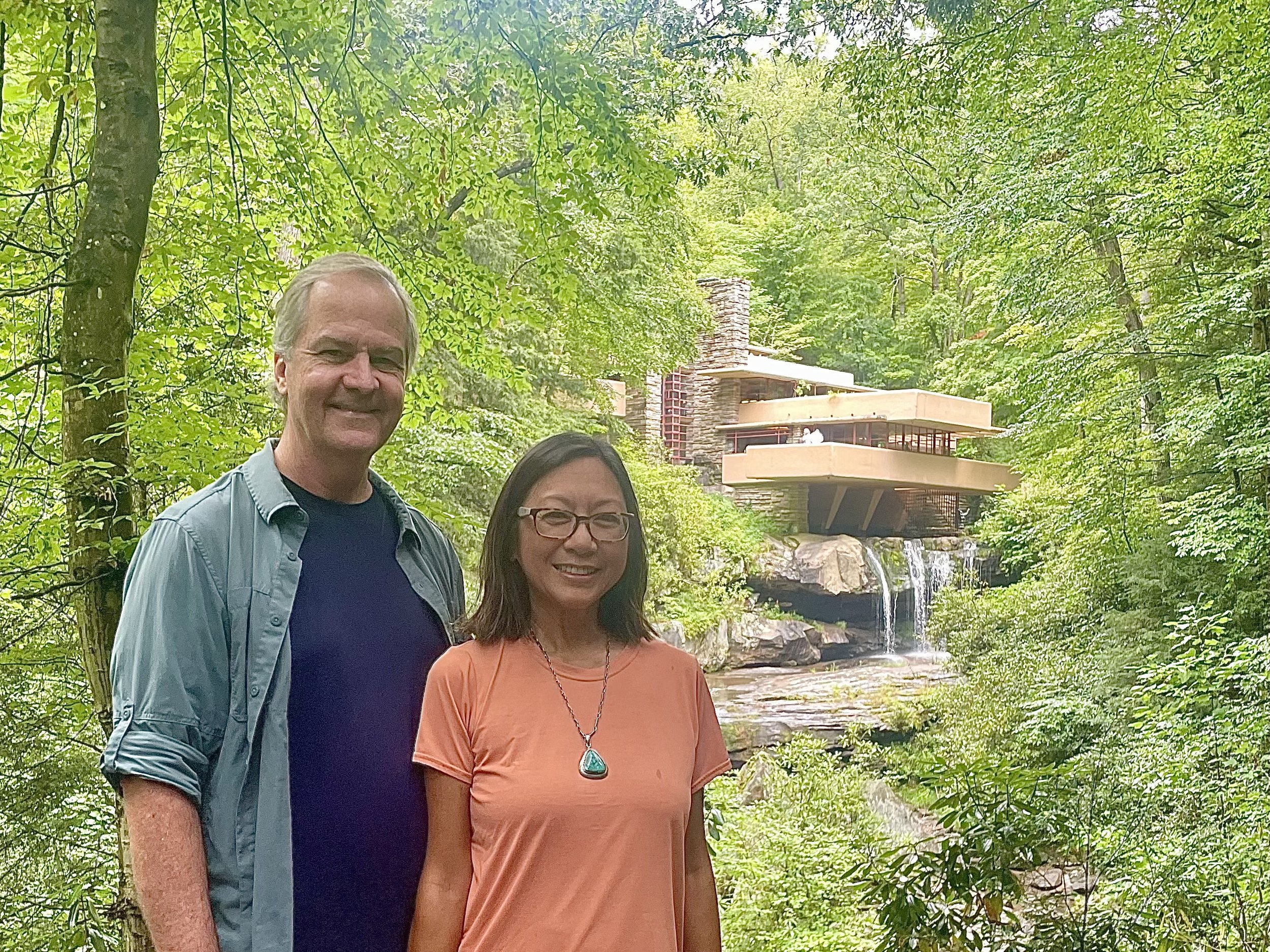
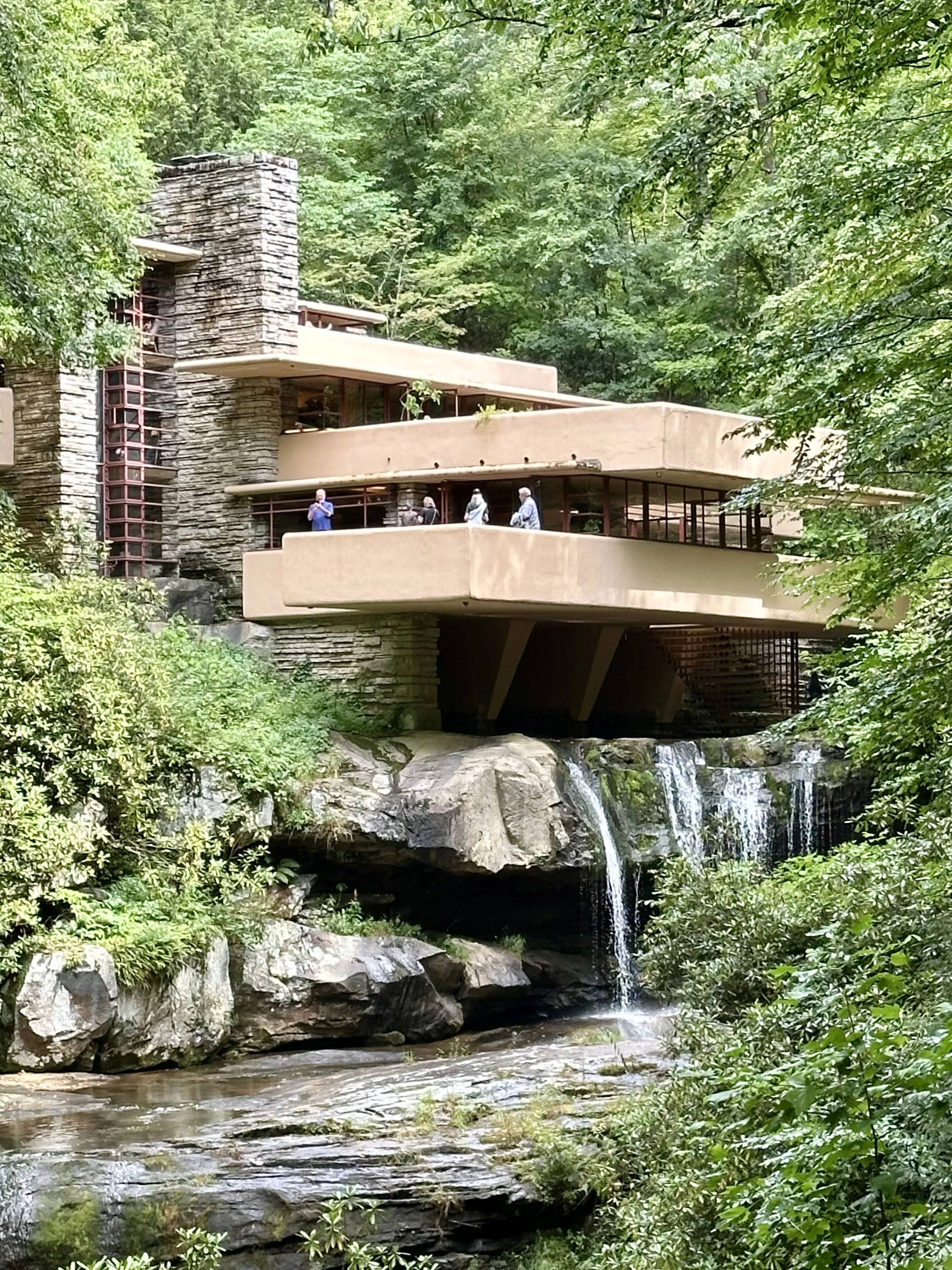
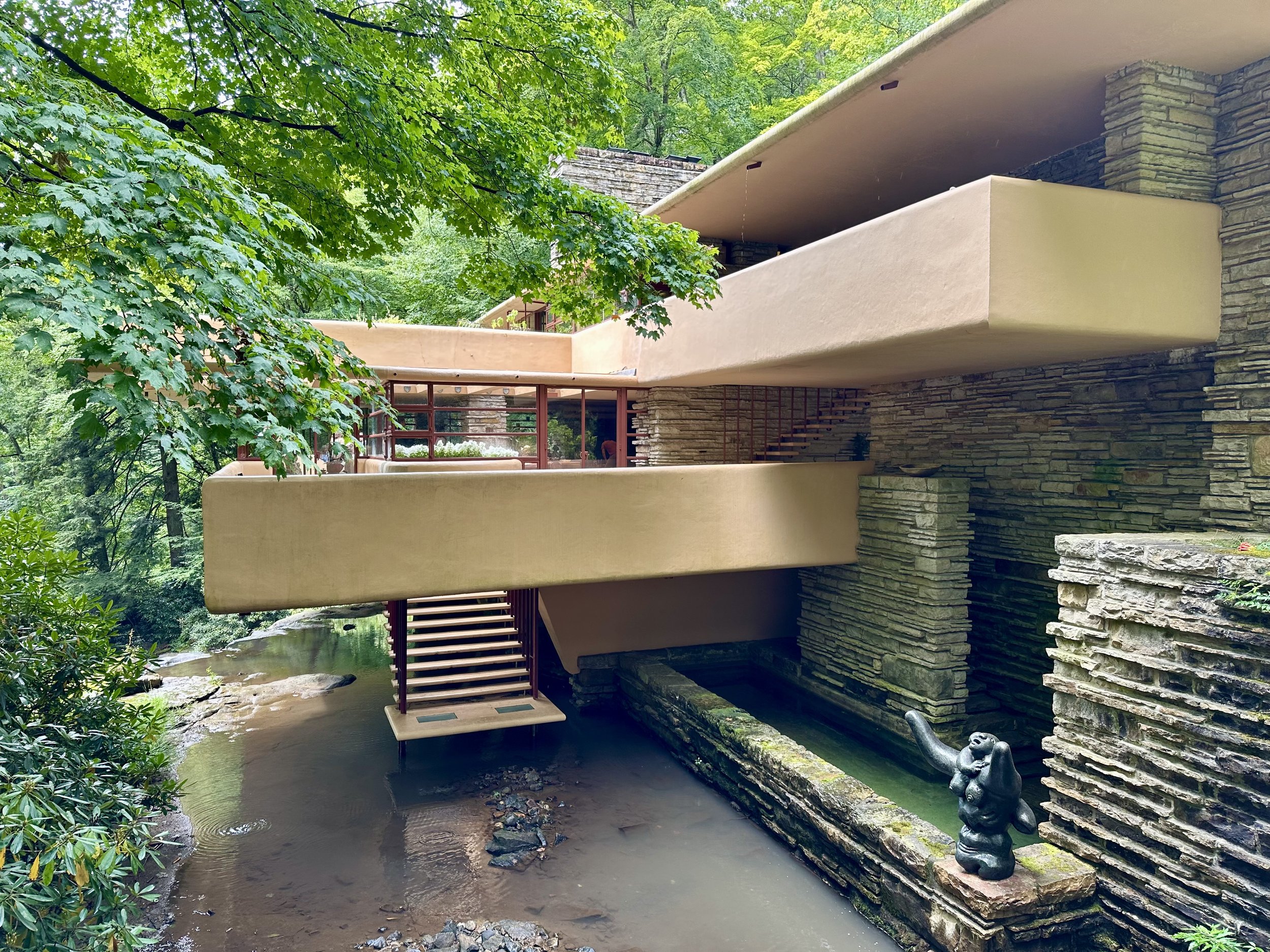
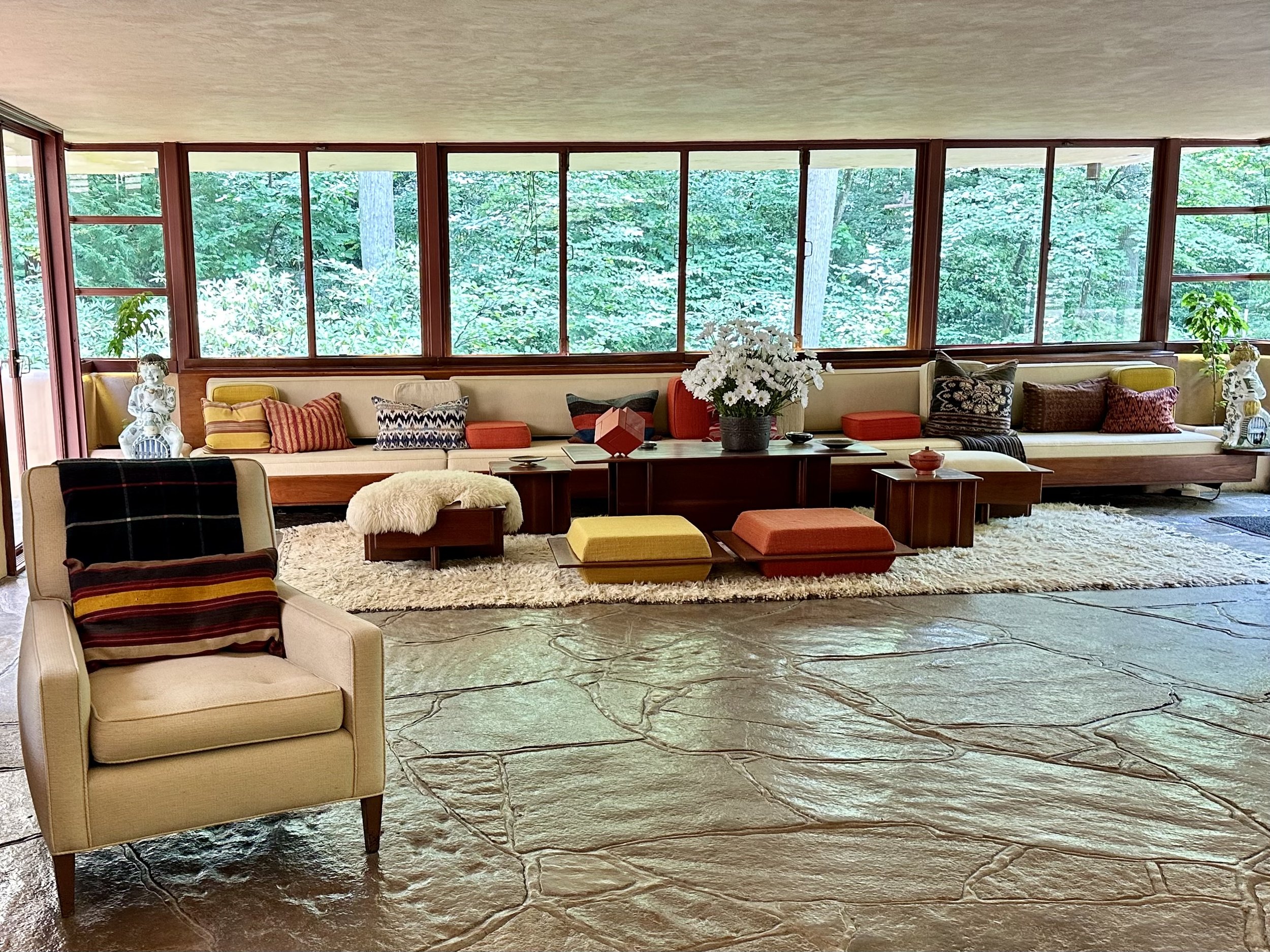
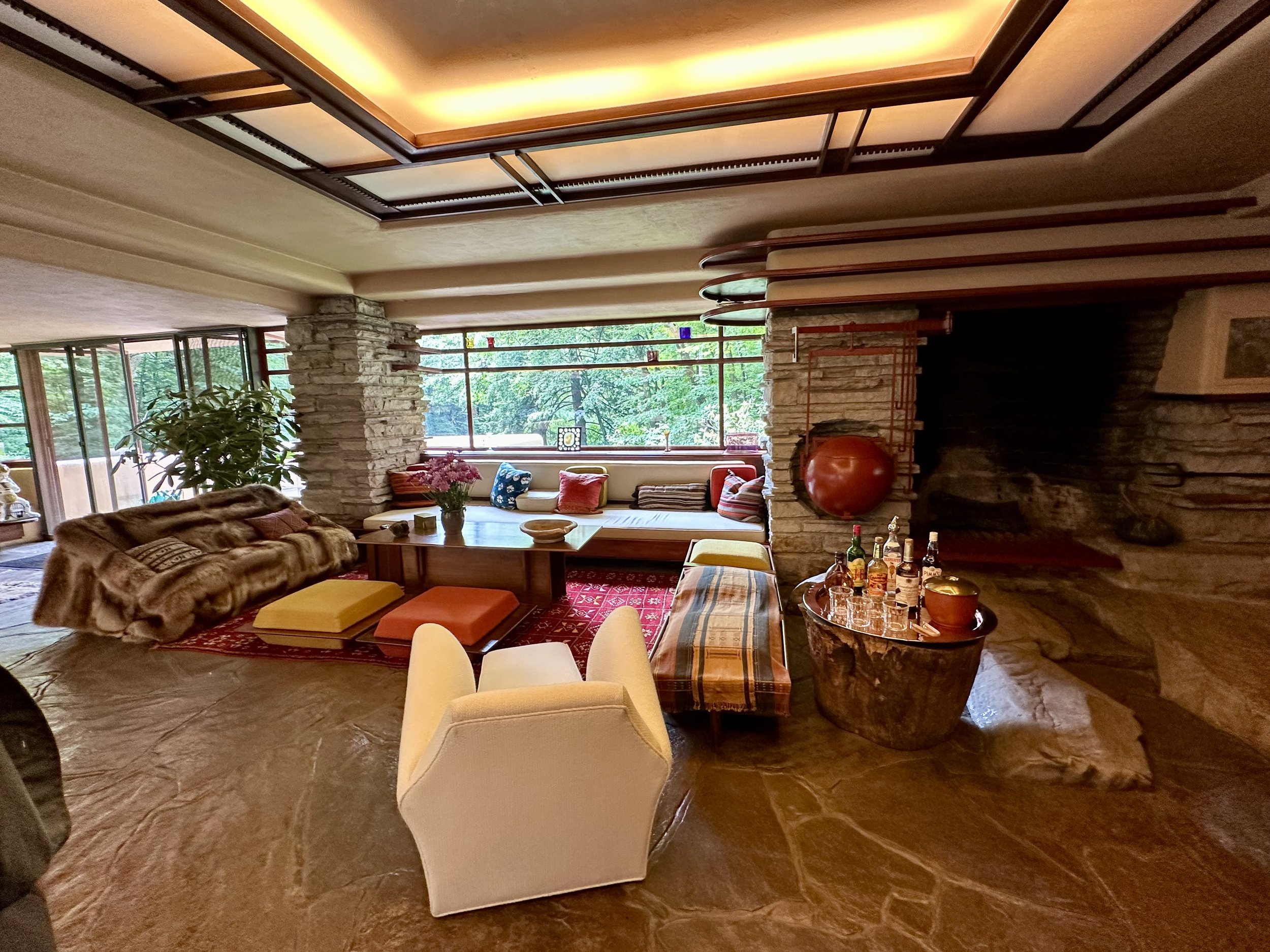
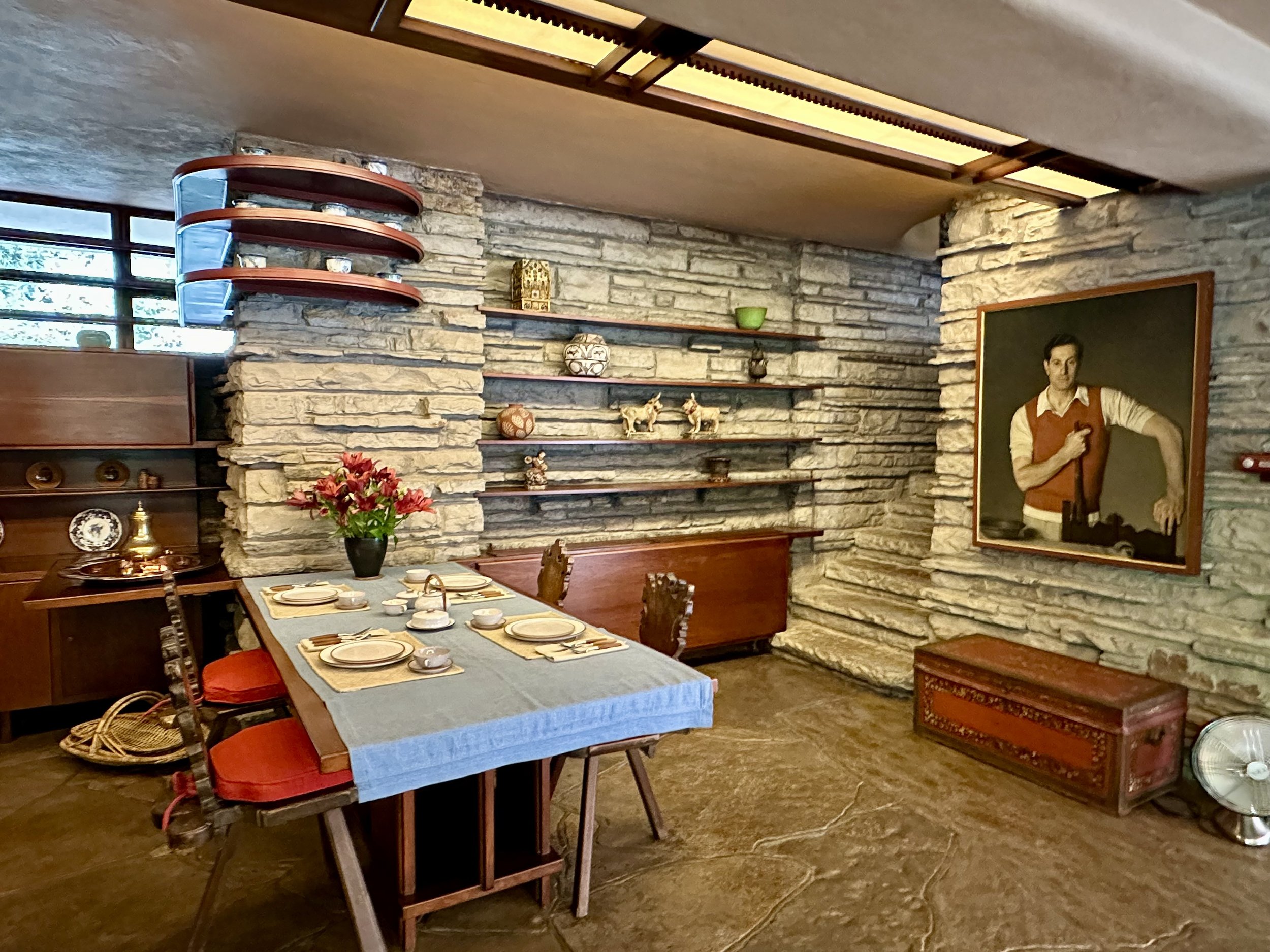
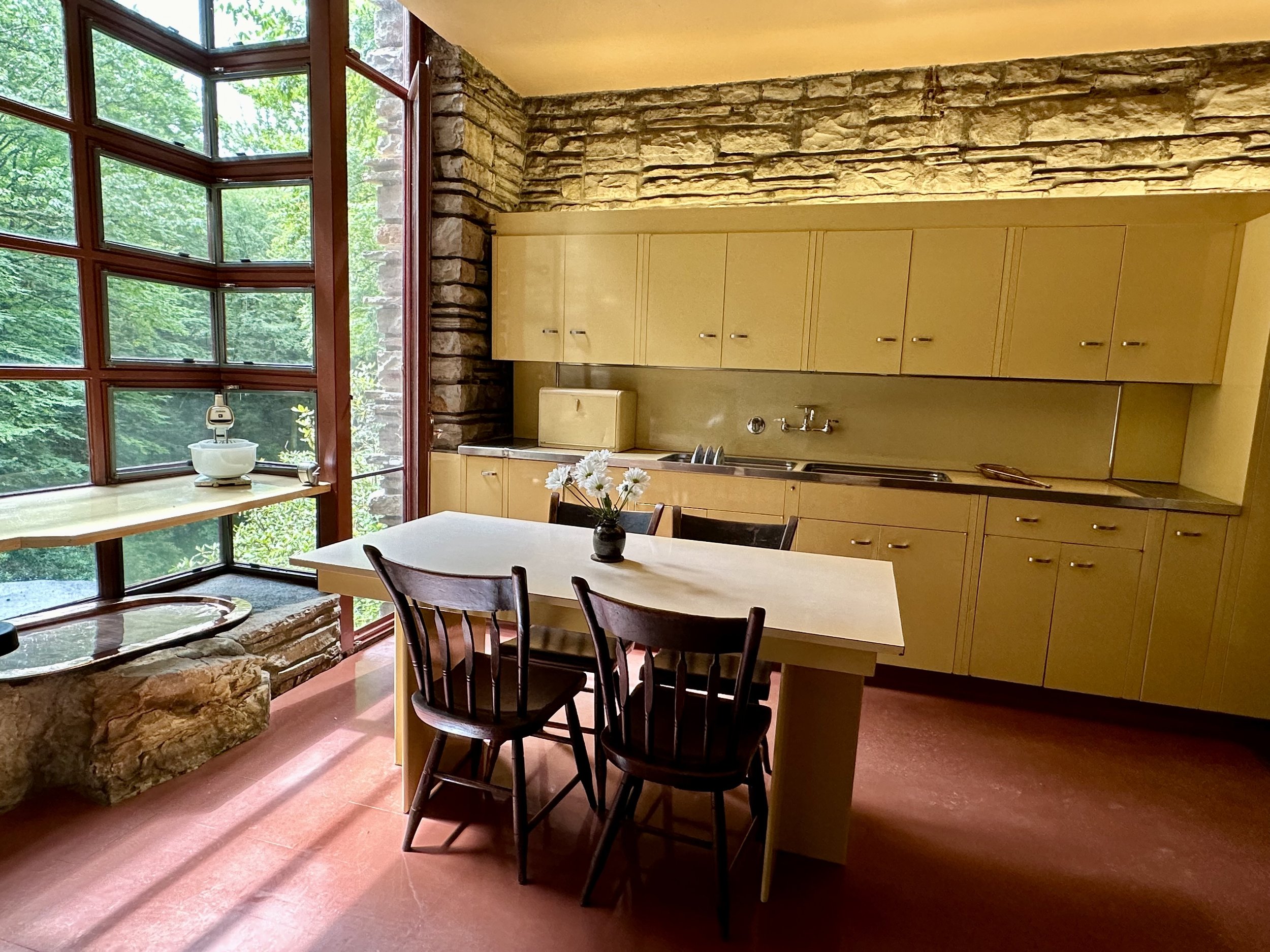
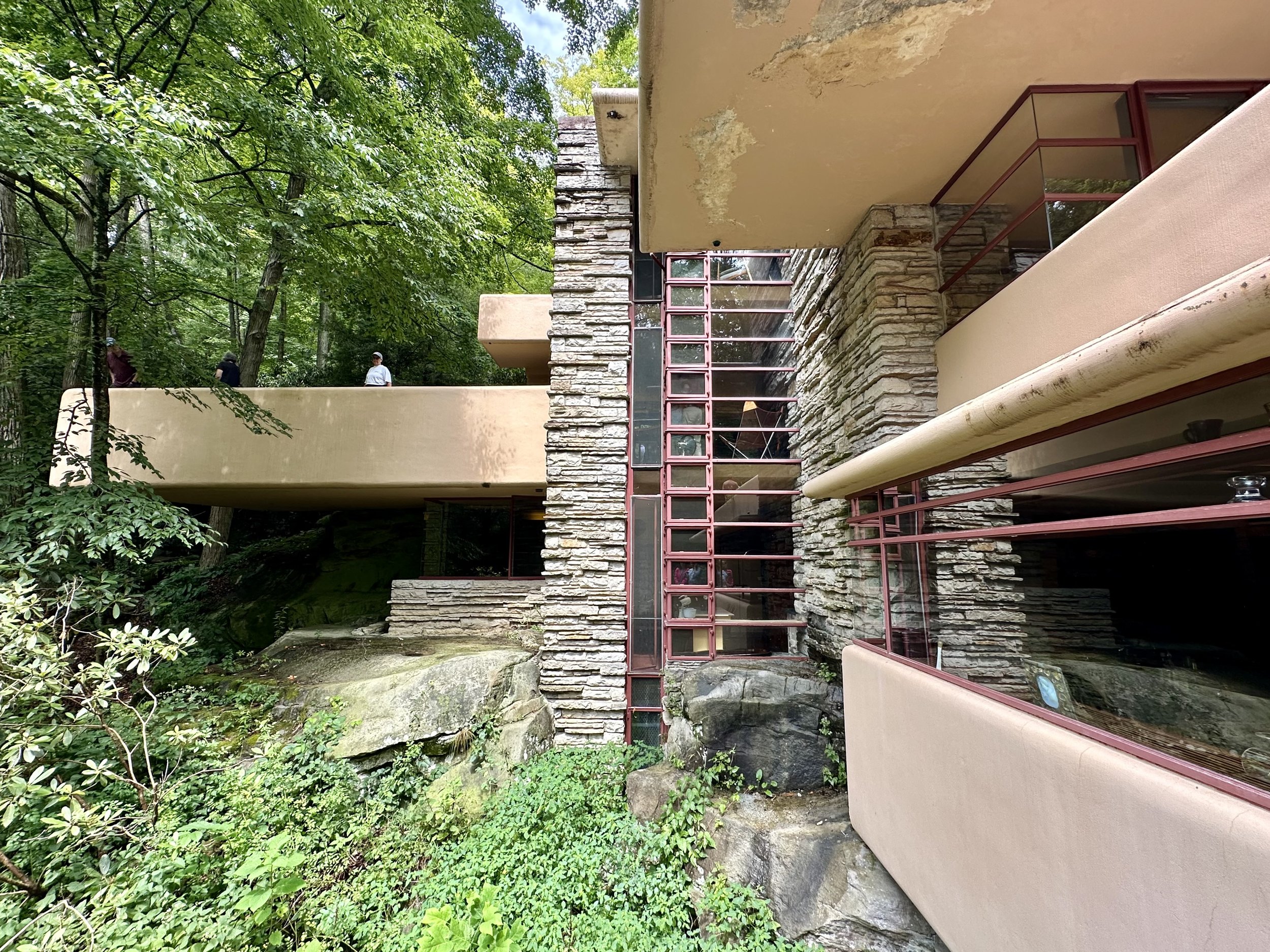
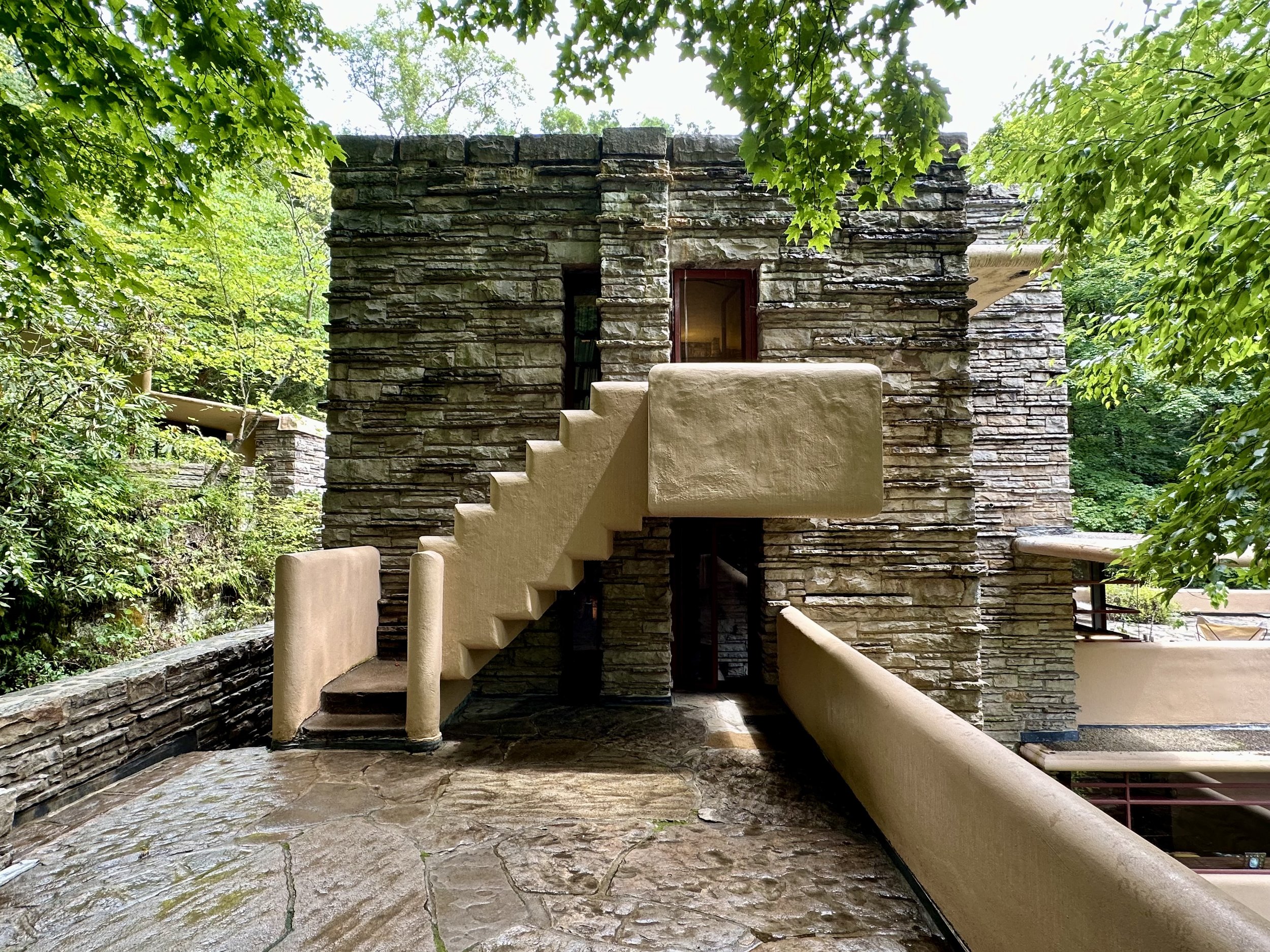
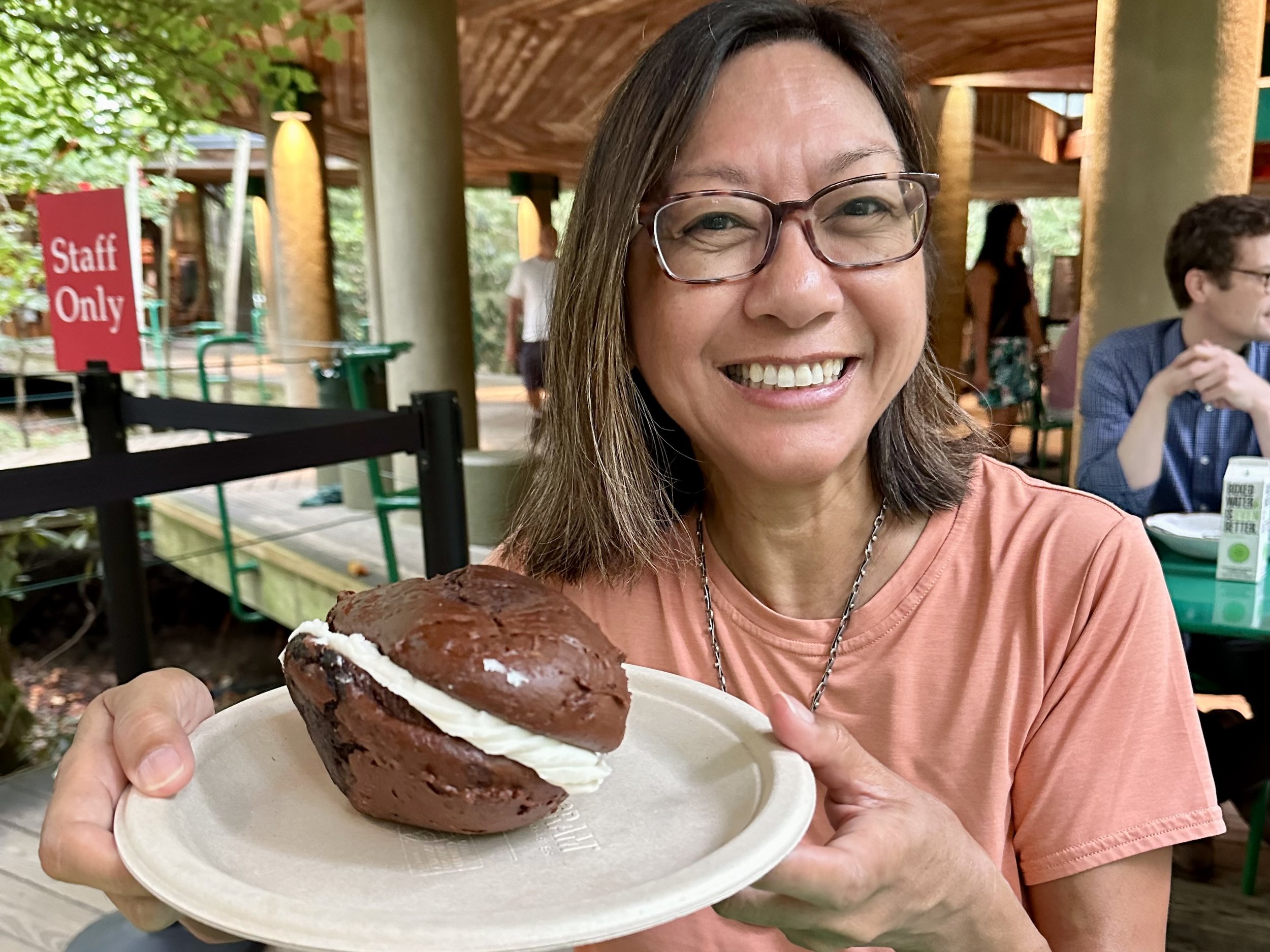
Fallingwater was one of those special places that more than lived up to its nearly mythical reputation. I was in awe at Wright’s genius and grateful that the Kaufmanns respected it and had deep pockets that allowed him to achieve his vision - to create a home in harmony with nature.
Edgar J. Kaufmann, Jr., the only son of Edgar and Liliane - and the reason that they learned about Wright in the first place - deeded Fallingwater to the Western Pennsylvania Conservancy in 1963, as a memorial to his parents. Along with seven other buildings in the U.S. designed by Frank Lloyd Wright, Fallingwater is a UNSECO World Heritage Site.